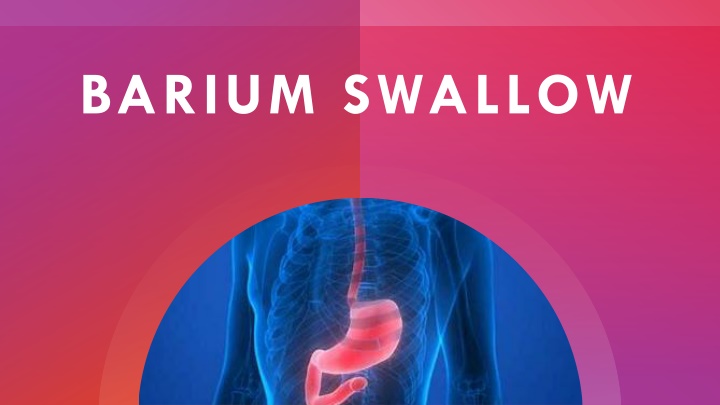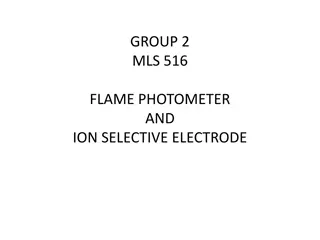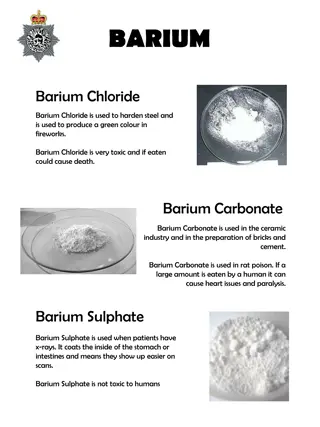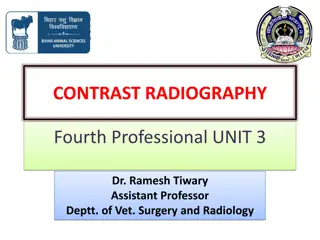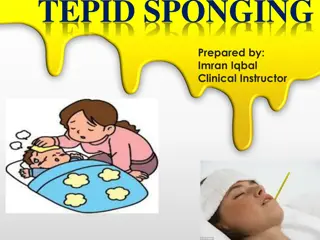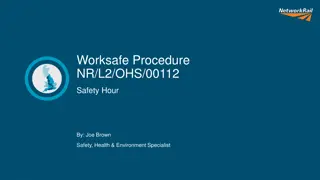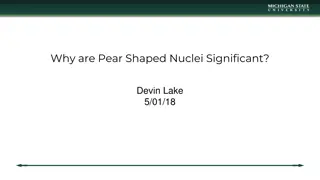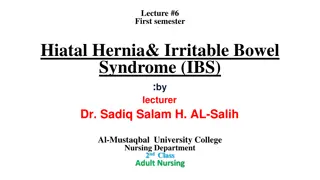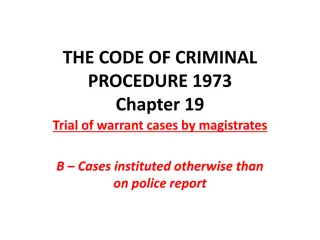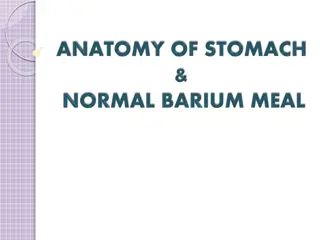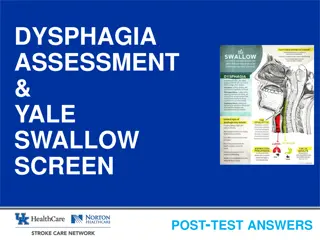Comprehensive Guide to Barium Swallow Procedure
Barium swallow is a dedicated test to evaluate the pharynx, esophagus, and proximal stomach. It helps diagnose conditions like dysphagia, obstructions, and motility disorders. This guide covers the indications, contraindications, preparation, contrast agents used, and evaluation steps for the procedure.
Download Presentation

Please find below an Image/Link to download the presentation.
The content on the website is provided AS IS for your information and personal use only. It may not be sold, licensed, or shared on other websites without obtaining consent from the author.If you encounter any issues during the download, it is possible that the publisher has removed the file from their server.
You are allowed to download the files provided on this website for personal or commercial use, subject to the condition that they are used lawfully. All files are the property of their respective owners.
The content on the website is provided AS IS for your information and personal use only. It may not be sold, licensed, or shared on other websites without obtaining consent from the author.
E N D
Presentation Transcript
INTRODUCTION Barium swallow is a dedicated test of the pharynx, esophagus, and proximal stomach, and may be performed as a single or double contrast study. To evaluate the entire pathway from the lips to the gastric fundus.
INDICATIONS Dysphagia and obstruction. Pain during swallowing. Assessment of mediastinal masses. Assessment of left atrial enlargement. Pre-op assessment of carcinoma bronchus and oesophagus. Motility disorders of oesophagus, E.g.: Achalasia(damage to nerves) and diffuse oesophageal spasm, scleroderma. Assessment of site of perforation.
CONTRAINDICATIONS Tracheo oesophageal fistula. Perforation. NOTE : Water-soluble contrast agents should be used instead of barium in this conditions Pregnancy
PREPARATION Over night fasting or atleast 4 hours fasting Do not dehydrate the patient Low residue diet. Avoiding smoking and chewing gum
CONTRAST 100% Barium sulphate paste. 80% Barium sulphate suspension. 30% Barium sulphate suspension for high kV technique. 200-250% high density, low viscosity for double contrast study.
EVALUATION OF PHARYNX Scout films are obtained to rule out any foreign body, abscess or fistula One mouthful (about 10-15 ml) of contrast media (Barium sulphate paste) is given and fluoroscopic observation of the act of deglutition is observed in frontal and lateral view with the patient erect. Right lateral views should be obtained initially to rule out aspiration or penetration, then frontal views are obtained. Lateral film is taken in erect and frontal film in supine position.
EVALUATION OF OESOPHAGUS Single Contrast Multiple mouthfuls of 80% w /v Barium suspension are given. Follow the barium bolus down the oesophagus and observe the peristalsis always in supine position. Films are exposed in erect position RAO, LAO, frontal and lateral views when the oesophagus is well distended. In RAO position esophagus is projected clear of the spine. Mucosal film is taken in RAO after the oesophagus is empty. Then the fundus of the stomach & gastro oesophageal junction are assessed with spot films in different obliquities in erect and recumbent positions.
DOUBLE CONTRAST Barium contrast should be high density, low viscosity (200 to 250%). 15-20 ml Barium is given in the mouth and the patient is asked to swallow. Then effervescent powder is given with another mouthful of barium. In erect position, gas tends to stay up, resulting in adequate distension which stays for longer time as compared to supine position. Prone position also retains more gas within the oesophagus and gives adequate distension. Filming is done in frontal, lateral, RAO and LAO.
STANDARD VIEWS Erect AP, lateral , RAO, LAO. Supine AP, Prone and Right & Left recumbent.
T E C H N I Q U E F O R AQ U I S I T I O N kV : 60-80 mAs : 16-25 FSS : Large FFD :100 cms With grid Caseette size : 14x14 and 17 x 14
C O M P L I C AT I O N S Leakage of barium from an unsuspected perforation- granuloma formation. Aspiration.
THANK YOU M SUNIL KUMAR CENTURION UNIVERSITY
